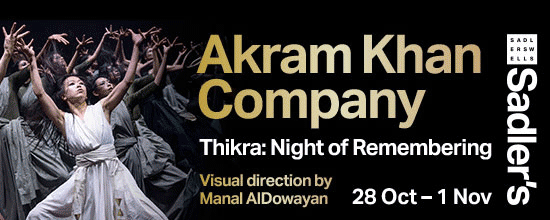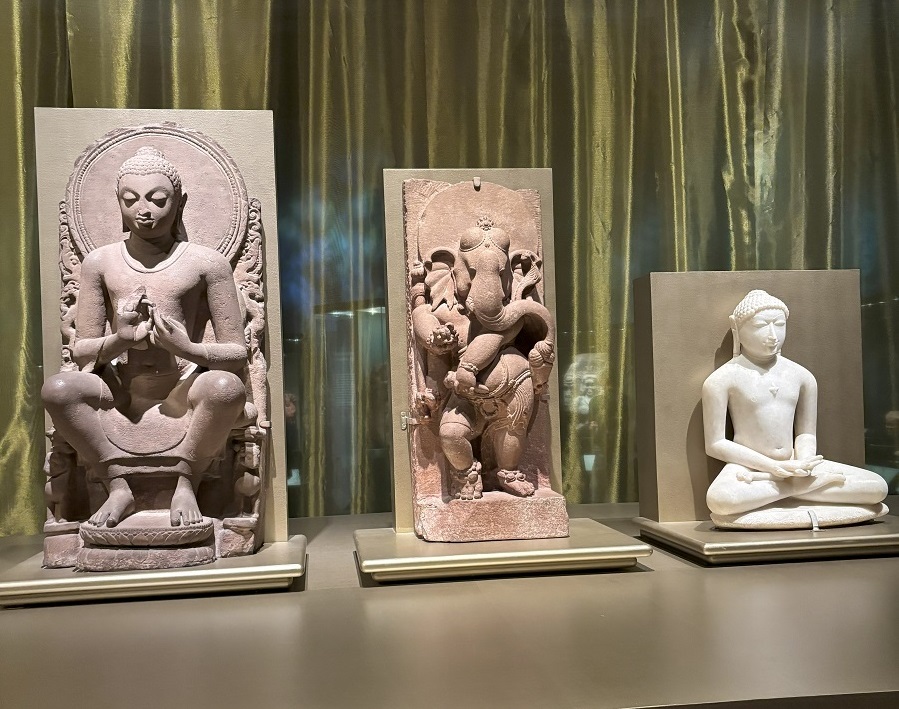‘Ancient India: living traditions’ – last call for beautiful, imaginative, stimulating exhibition
British Museum exhibition is stunning
HURRY, there’s not long for this exhibition and if you’re interested in ancient India, ideas, spirituality and world religions, then this is unmissable, essentially.
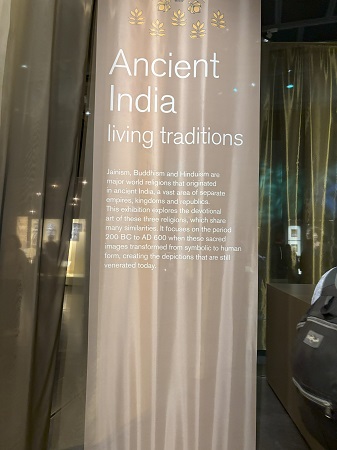
There’s a lot here, though it’s not overwhelming or unmanageable by any means – you can be in and out in an hour or 90 minutes – even if you spend a few minutes by the displays.
There’s a beautiful, ethereal quality to it: the lighting, the shimmering veils, and the figures themselves all work together to create something of a sacred space, more felt and experienced than seen with the naked eye here (on the page).
You feel like you are going back to those times and seeing some of these lifeform structures as though you had come across them in a temple or a field of that time.
It’s not the scale of ‘Ancient India: living traditions’ – it’s the range, breadth and beauty of what’s on show.
Also what struck www.asianculturevulture.com was how little some of the art has changed over two millennia – if you are familiar with Indian iconography from the country itself – Hinduism, Jainism and Buddhism are part of the fabric of modern India itself.
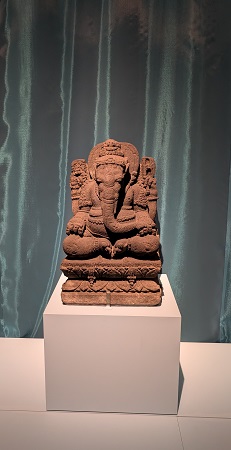
Buddhism is not much practised at a formal, community level in India – except for regions such as Ladakh – which has many monasteries. All around the foothills of the Himalayas, there are Buddhist communities – with perhaps the most famous being McLeod Ganj (near Dharamshala) in Himachal Pradesh and the home of the exiled Dalai Lama. Around Darjeeling in India’s north east, there are also Tibetan Buddhist communities.
The culture and ideas Buddha promulgated remain very visible in Indian culture, art and history to this day.
The advent of Islam and Sikhism come far, far later and are every bit as part of the land we now call India; but this exhibition focuses on ancient India and the items on display start from around 200BC and go up to about 600AD.
Seeing these exhibits makes you realise how continuous some aspects of Indian culture have been from the beginning of a civilisation in the region we now call India/Bharat.
Both Buddhism and Jainism developed at the same time and you can see how they borrowed and influence each other in art and iconography and the same could be said of ‘Hinduism’.
We use the inverted commas because Hinduism was not thought of as a distinct faith – and even to this day, there are some who would argue it is not a religion – certainly not in the way of Buddhism or Jainism; it cannot be linked to central figures such Lord Buddha or Rishabhadeva (the first in the 24 Jain tirthankaras who according to Jain scriptures shared their wisdom and insights and brought their ideas to earth and into being). While Hinduism has certain similar concepts and the philosophy can appear indivisible (reincarnation, liberation-moskha-nirvana – and thoughts about the natural world), they have distinct trajectories and developed beyond each other.
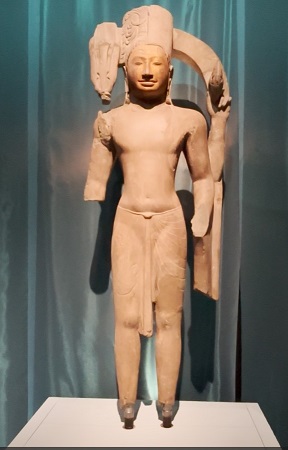
The collection of beliefs and ideas coalesced into a culture and a way of thinking about the world which is pluralistic and mostly accepting – and there is a wide range of style and aesthetics at play.
Immigrant and diaspora communities from all these three faiths practise in the West and there are multi media films that illustrate practice and rituals in Britain today – it is a nice touch to see these faiths, somewhat entombed in stone, and other ancient materials, still be ‘lived’ and thought about today in modern Britain.
This is well worth visiting if religious & spiritual art of this type interests you or you are simply interested in ancient Indian culture and how it developed and spread – some exhibits are from modern day south east Asia and the largest temple structure ever created is not in India but in Cambodia and is Angkor Wat – it is actually the world’s largest religious monument.
As an aside, the spread of such ideas, culture and thinking is covered in British historian William Dalyrmple’s majestic ‘The Golden Road’ which charts the spread of Indic ideas from early times to the 1500s and was published last year.
ACV rating: *****(five out of five)
Ancient India: living Traditions until October 19 2025
The Sainsbury Exhibitions Gallery
The British Museum, Great Russell Street, London WC1B 3DG
https://www.britishmuseum.org/exhibitions/ancient-india-living-traditions
William Dalyrmple ‘The Golden Road’ – https://www.bloomsbury.com/uk/golden-road-9781408864418/


